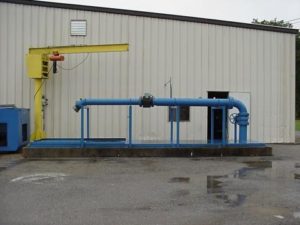DECATUR, Ill. (WAND) – Workforce Investment Solutions helped a Decatur man land a full-time career he enjoys.
Eric Buchanan has been with Decatur Industrial Electric for about nine months. He went there through a partnership with WIS, which helped him gain the training he needed to take on the work.
“We receive a lot of applicants that need training, even in soft skills,” said DIE Marketing and Recruitment Director Kelli Runyon. “So when Eric came in, and since he worked with Workforce, he already knew how to be prepared for a job interview, how to interact with other employees and skills that are really necessary to a shop environment.”
Buchanan enjoys his position, where he washes electric motor parts in the “steam pit”.
“I’m part of a union,” Buchanan said. “I get benefits, insurance (and) a 401K plan. I really like it.”
WIS leaders say Buchanan is a prime example of how the training they offer can help someone be ready for the workforce.
“Eric was a testimonial for our program,” said Larry Peterson of WIS. “We had an advanced manufacturing training session going on, one of which was classroom training. When he wasn’t in class in the mornings in the afternoons, he worked at National Food Works in our work experience program.”

 in a variety of industries. Given the fact that the motor and most of the power cables are under water or something similar to water, your approach to acceptance criteria may need to be tweaked a little from your normal acceptance criteria for electric motors designed to operate in dry environments. Manufacturer’s recommended guidelines for continued operation of submersible pumps/motors include very broad tolerances which would suggest trending as a preferred approach to evaluating insulation integrity and reliability.
in a variety of industries. Given the fact that the motor and most of the power cables are under water or something similar to water, your approach to acceptance criteria may need to be tweaked a little from your normal acceptance criteria for electric motors designed to operate in dry environments. Manufacturer’s recommended guidelines for continued operation of submersible pumps/motors include very broad tolerances which would suggest trending as a preferred approach to evaluating insulation integrity and reliability.